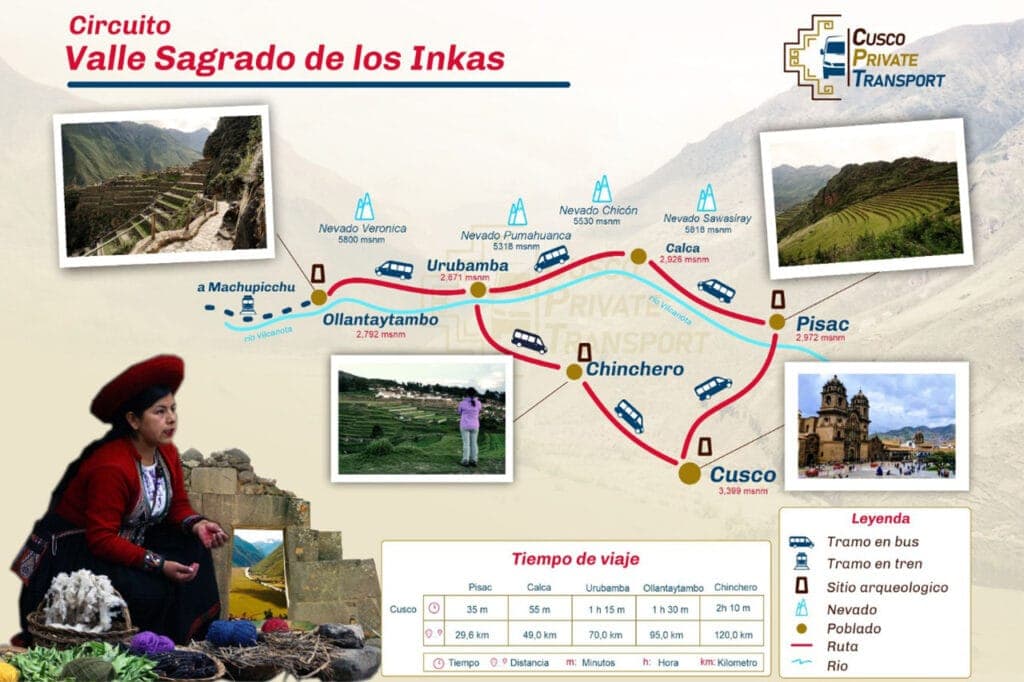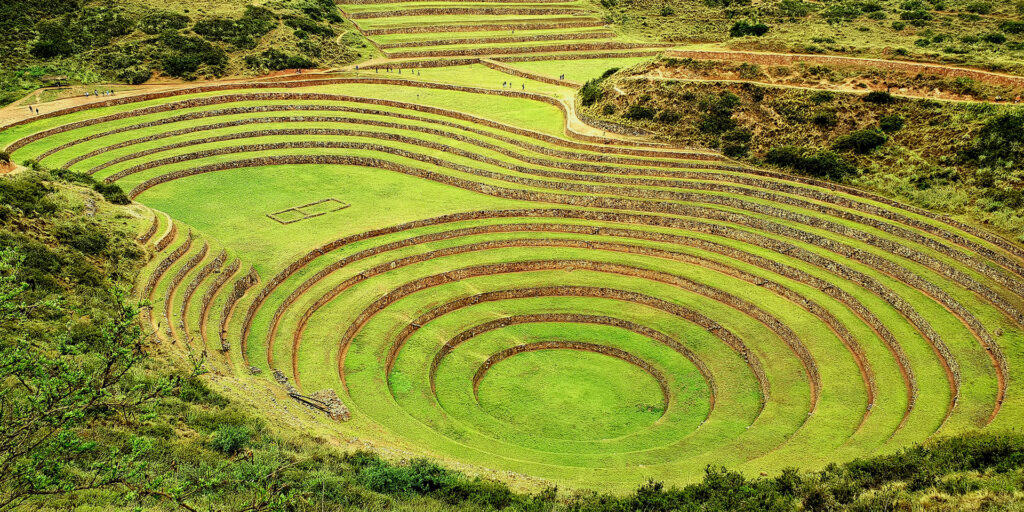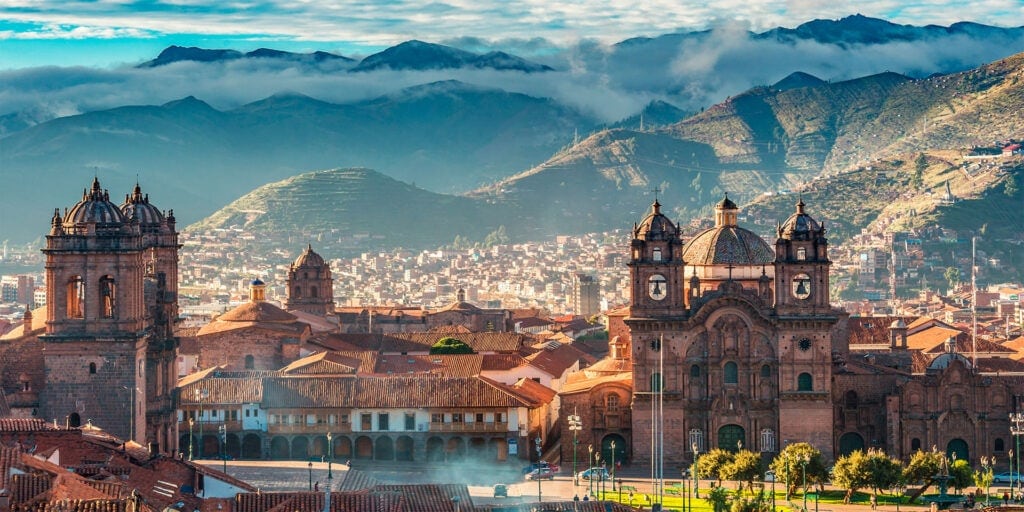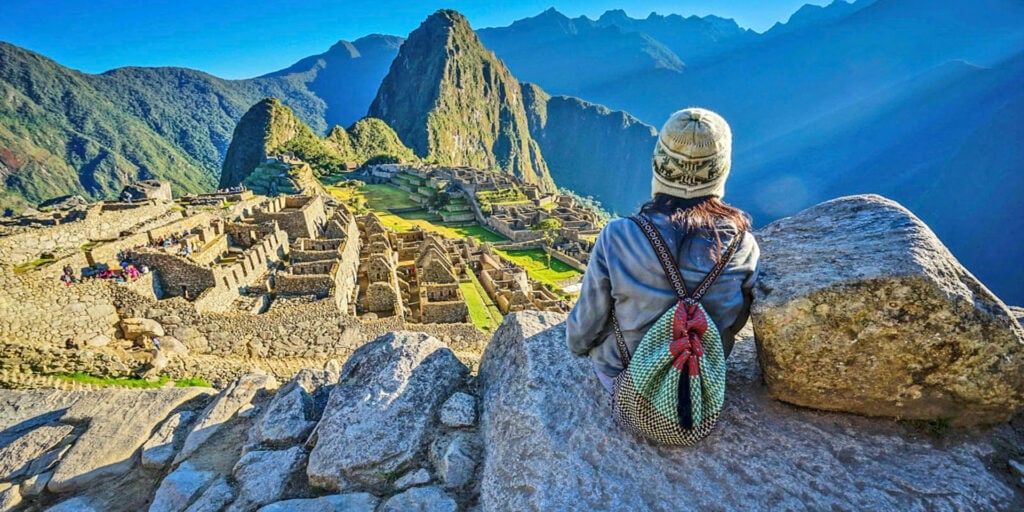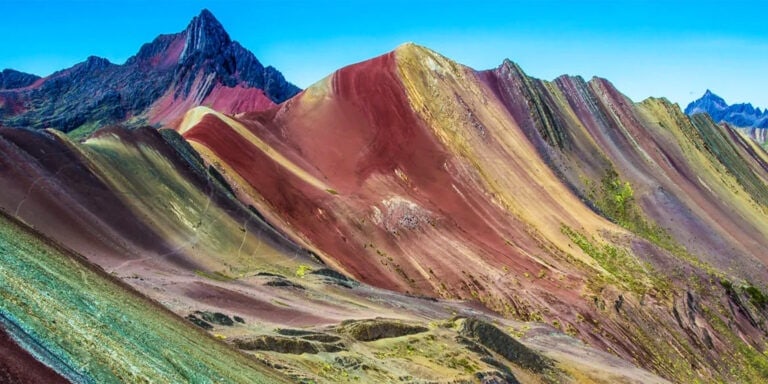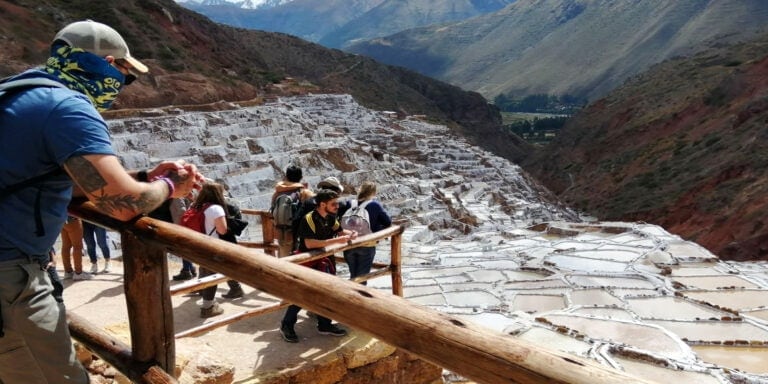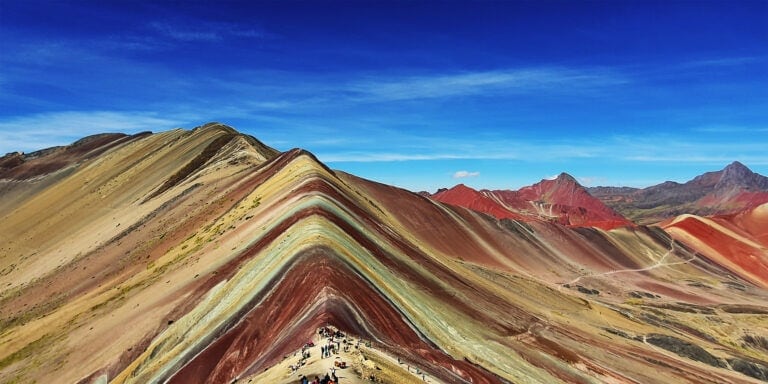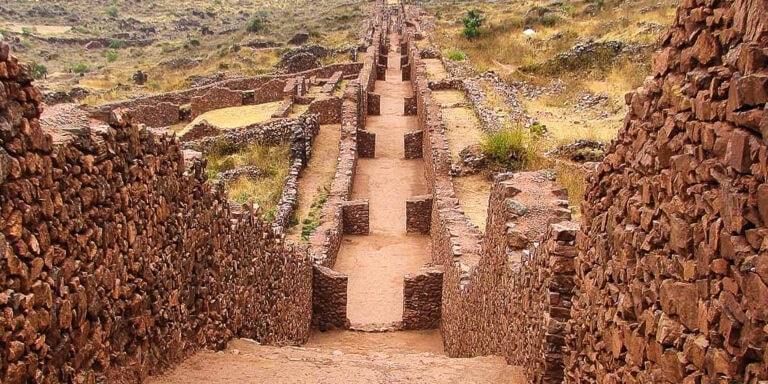The sacred valley is line-marked by the geographical extension through where Willcamayu river (or Vilcanota in its Spanish refonologization) is running along. It is called Sacred valley for its unique climatic characteristics and its agricultural production. The accidental terrain contrasts with the green landscapes of its farming fields, surrounded by mountains and beautiful snow-capped peaks. In this natural scenery, the Inca culture and its predecessors built their cities in the highest and the most inaccessible mountains to take advantage of the reduced arable land of its valleys.
In the Sacred valley tour, we visit Pisac, Ollantaytambo and Chinchero. The Inca city of Pisac, located on the top of a mountain, is an example of the ability of the Andean men to overcome geographical adversities. Ollantaytambo is an Inca town, still inhabited, located in a strategical place as the unavoidable entrance to Machupicchu. Eventually, Chinchero was the tenth Inca emperor’s royal retreat, Tupac Inca Yupanqui. Today a picturesque colonial church can be seen on the inka remains.
PISAC:
Pisac was an Inca city larger than Machupicchu. Due to its geographical location, was a trading center that linked the jungle with the imperial city of Cusco. Through this route, the coca leaf used to be traded, taking the leaves as the national Inca currency.
The city of Pisac was built in stone. They adapted their dwellings and farming terraces in the most inaccessible mountain slopes, thus they took advantage of the lack of soil, usable for agriculture.
OLLANTAYTAMBO:
The town of Ollantaytambo is located where two rivers meet (the Vilcanota river and the Patacancha river) at the point where the valley is narrower, where they built walls that cut off the valley from one side to the other. This facilitated the control of entry and exit from Machupicchu. At the top of its walls, on a rocky mountain, we can appreciate the religious sector, called the temple of the sun. Its construction stands out for its gigantic walls made with stones brought from more than 7 km away.
The urban sector of Ollantaytambo is the only Inca remain that is still inhabited by XXI century-citizens. Its streets maintain the same urban Inca layout of the XV century, with aqueducts running through channels everywhere. Most of its dwellings keep the Inca design, with carved stone at the base, adobe (sun-dried mud bricks) on its walls and topped with a colonial tile roof.
CHINCHERO:
The archaeological complex of Chinchero was the tenth Inca emperor´s royal retreat, Tupac Inka Yupanqui. The site is surrounded by ornamental terraces, which highlight the great ceremonial plaza, several remains of Inca dwellings and shrines. On the Inca construction of Chinchero you can see a beautiful colonial church, which was built following stamping out of idolatries law that ordered the destruction of Inca temples for evangelizing purposes.
RECOMMENDED! For a better travel experience, we recommend you hire a professional tour guide.
INCLUDED:
- Private tourist transport at your disposal.
- Professional driver service.
- Visit the tourist attractions described in the program. Available time up to the costumer.
NOT INCLUDED:
- Cusco Tourist Ticket (BTC) – Circuit III (PARTIAL TICKET)
- Meals.
- Tips.
WHAT TO BRING:
- ID or Passport.
- Light clothing and windbreaker.
- Plastic poncho for rain.
- Sunglasses.
- Extra cash for snacks or souvenirs.
- Sunscreen.
- Hat or cap to cover yourself from the sun.
- Light shoes.
- Positive mind.

